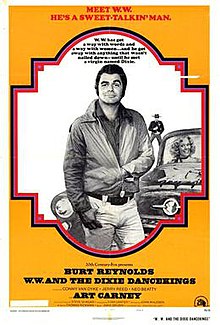
Rocky is a 1976 American sports drama film directed by John G. Avildsen and written by and starring Sylvester Stallone. It is the first installment in the Rocky franchise and also stars Talia Shire, Burt Young, Carl Weathers, and Burgess Meredith. In the film, Rocky Balboa (Stallone), a poor small-time club fighter and loanshark debt collector from Philadelphia, gets an unlikely shot at the world heavyweight championship held by Apollo Creed (Weathers).

John Guilbert Avildsen was an American film director. He is best known for directing Rocky (1976), which earned him the Academy Award for Best Director. He is also renowned for directing the first three films in The Karate Kid franchise (1984–1989). Other films he directed include Joe (1970), Save the Tiger (1973), The Formula (1980), Neighbors (1981), Lean on Me (1989), Rocky V (1990), 8 Seconds (1994), and Inferno (1999).

Deliverance is a 1972 American thriller film produced and directed by John Boorman, and starring Jon Voight, Burt Reynolds, Ned Beatty, and Ronny Cox, with the latter two making their feature film debuts. The screenplay was adapted by James Dickey from his 1970 novel of the same name. The film was a critical and box office success, earning three Academy Award nominations and five Golden Globe Award nominations.

Burton Leon Reynolds Jr. was an American actor and considered a sex symbol and icon of 1970s American popular culture. Reynolds first rose to prominence when he starred in television series such as Gunsmoke (1962–1965), Hawk (1966), and Dan August (1970–1971). He had leading roles in films such as Navajo Joe (1966) and 100 Rifles (1969), and his breakthrough role was as Lewis Medlock in Deliverance (1972).

Ned Thomas Beatty was an American actor. In a career that spanned five decades, he appeared in more than 160 films. Throughout his career, Beatty gained a reputation for being "the busiest actor in Hollywood". His film appearances included Deliverance (1972), White Lightning (1973), All the President's Men (1976), Network (1976), Superman (1978), Superman II (1980), Back to School (1986), Rudy (1993), Shooter (2007), Toy Story 3 (2010), and Rango (2011). He also had the series regular role of Stanley Bolander in the first three seasons of the hit NBC TV drama Homicide: Life on the Street.
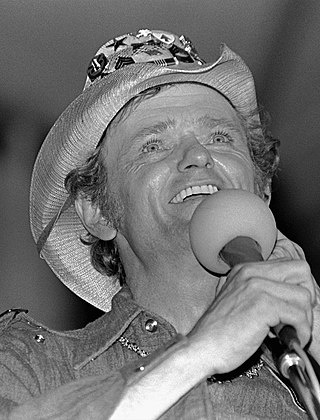
Jerry Reed Hubbard, known professionally as Jerry Reed, was an American singer, guitarist, composer, songwriter and actor who appeared in more than a dozen films. His signature songs included "Guitar Man", "U.S. Male", "A Thing Called Love", "Alabama Wild Man", "Amos Moses", "When You're Hot, You're Hot", "Ko-Ko Joe", "Lord, Mr. Ford", "East Bound and Down", "The Bird", and "She Got the Goldmine ".
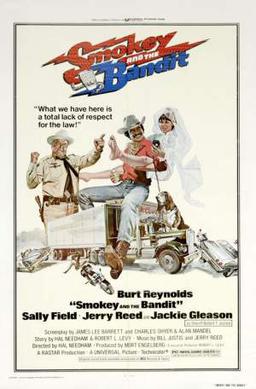
Smokey and the Bandit is a 1977 American action comedy film starring Burt Reynolds, Sally Field, Jackie Gleason, Jerry Reed, Pat McCormick, Paul Williams and Mike Henry. The film marks the directorial debut of stuntman Hal Needham.

Hal Brett Needham was an American stuntman, film director, actor, writer, and NASCAR team owner. He is best known for his frequent collaborations with actor Burt Reynolds, usually in films involving fast cars, such as Smokey and the Bandit (1977), Hooper (1978), The Cannonball Run (1981) and Stroker Ace (1983).
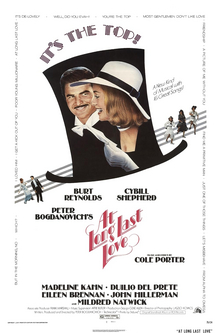
At Long Last Love is a 1975 American jukebox musical comedy film written, produced, and directed by Peter Bogdanovich, and featuring 18 songs with music and lyrics by Cole Porter. It stars Burt Reynolds, Cybill Shepherd, Madeline Kahn, and Duilio Del Prete as two couples who each switch partners during a party and attempt to make each other jealous. Bogdanovich was inspired to make a musical with Porter's songs after Shepherd gave him a book of them. All of the musical sequences were performed live by the cast, for At Long Last Love was meant by Bogdanovich to be a tribute to 1930s musical films like One Hour with You, The Love Parade, The Merry Widow and The Smiling Lieutenant in which the songs were shot in that way.
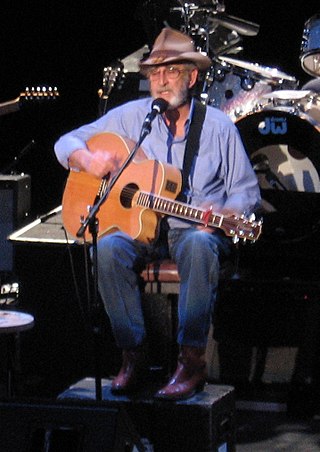
Donald Ray Williams was an American country music singer, songwriter, and 2010 inductee into the Country Music Hall of Fame. He began his solo career in 1971, singing popular ballads and amassing seventeen number one country hits. His straightforward yet smooth bass-baritone voice, soft tones, and imposing build earned him the nickname "The Gentle Giant". In 1975, Williams starred in a movie with Burt Reynolds and Jerry Reed called W.W. and the Dixie Dancekings.
Richard Douglas Hurst is an American actor who portrayed Deputy Cletus Hogg, Boss Hogg's cousin, in the 1980 to 1983 seasons of The Dukes of Hazzard as well as The Dukes of Hazzard: Reunion! in 1997 and The Dukes of Hazzard: Hazzard in Hollywood in 2000.

Stick is a 1985 American crime film based on Elmore Leonard's 1983 novel, and starring and directed by Burt Reynolds.

Conny Van Dyke, sometimes credited as Connie Van Dyke, was an American singer and actress.
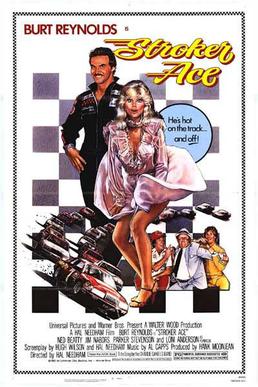
Stroker Ace is a 1983 American action comedy sport film directed by Hal Needham and starring Burt Reynolds as the eponymous Stroker Ace, a NASCAR driver.
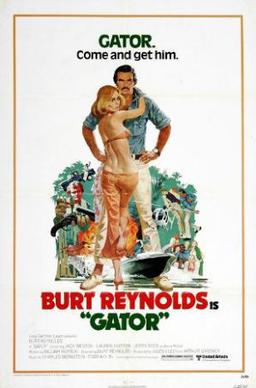
Gator is a 1976 American action comedy film and a sequel to White Lightning starring and directed by Burt Reynolds in his directorial debut.
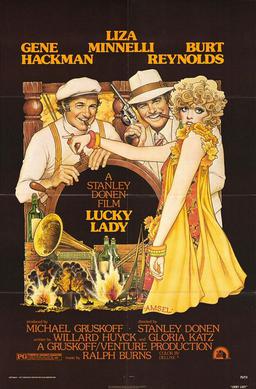
Lucky Lady is a 1975 American comedy-drama film directed by Stanley Donen and starring Liza Minnelli, Gene Hackman, Burt Reynolds and Robby Benson. Its story takes place in 1930 during Prohibition in the United States.

St. Ives is a 1976 American crime thriller film directed by J. Lee Thompson and starring Charles Bronson, John Houseman, Jacqueline Bisset, and Maximilian Schell.
James Crabe, A.S.C. was an American cinematographer, known for his work in the 1970s and '80s on numerous films, including Rocky, The China Syndrome, Night Shift, The Karate Kid, and Thank God It's Friday. He was a regular collaborator of director John G. Avildsen, and a two-time Primetime Emmy Award winner, in addition to being nominated for multiple ASC Awards and an Academy Award.
Cathy Baker is an American actress, best known for her work on the American television variety show Hee Haw.
